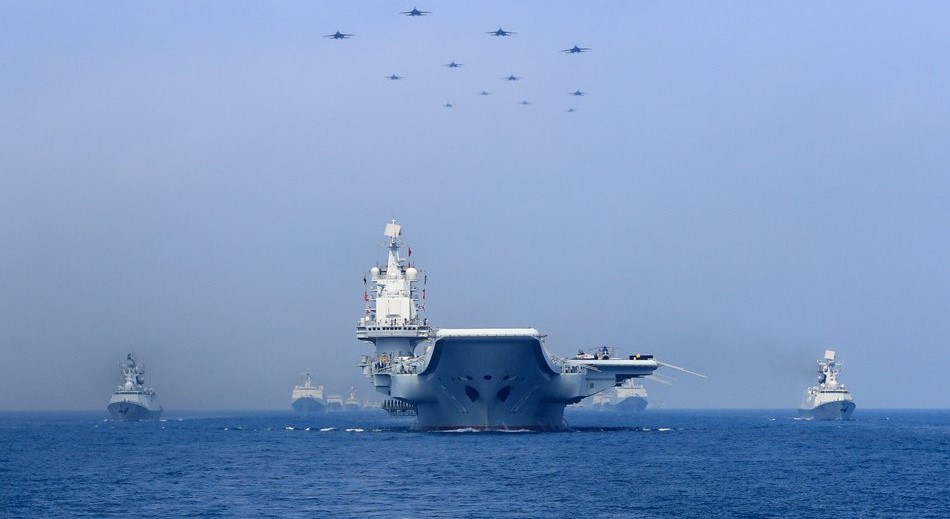China installs missiles in South China Sea
May 5, 2018 | Expert Insights

China has installed long-range anti-ship and anti-aircraft missiles on three of its artificial islands in the South China Sea. This move further solidifies Beijing’s military domination of the disputed waters.
Background
The South China Sea is at the heart of a land and water dispute between China, the United States, and many Southeast Asian nations. China’s claim to the region is historic, going back to the Xia and Han dynasties. The US has maintained that region as part of international waters. Other countries that are involved in the South China Sea dispute include Malaysia, Indonesia, the Philippines, and Vietnam. Vietnam has become the most vocal critic of China’s claims to the sea.
One of the reasons why the South China Sea is so vital to these countries is due to the strategic advantage it provides. If China had complete control of the region, then it would be able to control a major trade route. It would be able to disrupt trade shipments that pass through this region to East and Southeast Asia. Currently, $5.3 trillion worth of trade passes through the South China Sea. Read more: Resolution for South China Sea?
In the past, China has backed its expansive claims with island-building and naval patrols. The United States says it does not take sides in territorial disputes but has sent military ships and planes near disputed islands, calling them “freedom of navigation” operations to ensure access to key shipping and air routes.
South China Sea’s strategic position is not the only reason why the nations are battling for control over the region. Natural gas reserves that exist in the region are estimated to total around 7,500 km³ (266 trillion cubic feet). Reed Bank, which is situated near the coast of Philippines, is believed to hold large reserves of oil and natural gas. The region also holds reserves of minerals such as titaniferous magnetite, zircon, monazite, tin, gold, and chromite.
Analysis
Over the last month, the People’s Liberation Army Navy has been continuously staging successive air, naval, and marine assault exercises across the Western Pacific. Most notably, in late March, a large naval deployment was observed on satellite imagery – about 40 vessels including the aircraft carrier Liaoning.
According to US network CNBC, deployment of the missiles by China had occurred within the past 30 days. If confirmed, this move would represent a dramatic military escalation in the region by China, which claims 80-90% of the disputed waters of the South China Sea.
In the past, China stated that it has no intention to militarize the islands. However, it has also said that the islands were its sovereign territory and it had the right to defend them. Nevertheless, the deployment has not yet been confirmed. Satellite photos published in 2017 by the Center for Strategic and International Studies in Washington indicated the presence of hardened shelters designed to house missiles.
The missiles had been deployed at Fiery Cross Reef, Subi Reef, and Mischief Reef — three islands that were scoured out of coral reefs in the past five years, according to sources.
The reports of the missile deployment comes at a time of heightening tensions in the South China Sea — the waterways were recently visited by two US aircraft carriers for navigation operations, while China held its largest ever military naval exercises near Hainan island. It was also reported that China’s navy challenged three Australian navy vessels that were sailing through the region.
In the past, short-range weapons have been deployed temporarily in the Spratly Islands. However, this deployment marks the first time that long-range, anti-ship, and anti-aircraft missiles have been based there. China has also previously based long-range missiles in the disputed Sea on Woody Island, in the Paracel Islands. Military developments in the Spratly Islands are expected to trigger apprehension in the Paracels, because of China’s disputes with neighboring countries such as Vietnam.
China’s YJ-12B anti-ship cruise missiles will allow it to strike vessels within 295 nautical miles, while its HQ-9B long-range surface-to-air missiles could target aircraft, drones and cruise missiles within 160 nautical miles.
Assessment
Our assessment is that the latest militarization further cements China’s military control over the sensitive waterways of the South China Sea, through which much of the world’s seaborne oil cargoes pass. The most recent deployment of missiles concerns all Asian countries about Chinese military displays in the area. We feel that due to the strategic importance of the region, the deployment represents China’s ambition in attaining complete control over the South China Sea by exhibiting its military strength to others involved in the territorial disputes.








Comments